The Golden Fund of the Russian Geographical Society
DOCUMENTS FROM THE MOST INTERESTING EXPEDITIONS
Expeditions of the Russian Geographical Society have always consisted of tremendous work on collection of cartographic and meteorological data, ethnographic, geological, botanical collections. In addition, any expedition was accompanied by a daily and detailed recording of everything that happened to scientists and travelers. They kept diaries and drew maps, sketched new species of plants and animals themselves or asked an artist accompanying the expedition to do it, photographed settlements and landscapes encountered along the way, described in detail the customs of the life of local residents. All these documents eventually made up the stock collection of the Russian Geographical Society, the formation of which began from the moment of its establishment in 1845. In our online exhibition, we will show only a small part of this rich and interesting collection and tell about nineteen researchers.
Russian Geographical Society was founded by the Imperial order of Emperor Nicholas I. On August 18 (August 6, old style), 1845, the emperor approved the provisional charter of the Russian Geographical Society. This day in 2020 was approved by the Government of Russia as the Day of Geographer.
Russian Geographical Society has made a huge contribution to the study of European Russia, the Urals, Siberia, the Far East, Central and Central Asia, the Caucasus, Iran, India, New Guinea, polar countries and other territories. These studies are associated with the names of Nikolai Przhevalsky, Grigory Potanin, Mikhail Pevtsov, Grigory Grumm-Grzhimailo, Pyotr Semenov-Tyan-Shansky, Pyotr Kozlov, Nikolai Miklukho-Maclay and many others.
Russian Geographical Society has made a huge contribution to the study of European Russia, the Urals, Siberia, the Far East, Central and Central Asia, the Caucasus, Iran, India, New Guinea, polar countries and other territories. These studies are associated with the names of Nikolai Przhevalsky, Grigory Potanin, Mikhail Pevtsov, Grigory Grumm-Grzhimailo, Pyotr Semenov-Tyan-Shansky, Pyotr Kozlov, Nikolai Miklukho-Maclay and many others.

The laying of the building of the Russian Geographical Society, 1907
Photo: Scientific archive of the Russian Geographical Society
Photo: Scientific archive of the Russian Geographical Society


Sablya Ridge
I. Bermeleev. Lithograph, mid-19th century. From the funds of the Russian Geographical Society
I. Bermeleev. Lithograph, mid-19th century. From the funds of the Russian Geographical Society

The Ural expedition led by Hoffman was equipped by the Imperial Russian Geographical Society to research the practically unexplored Polar Urals and adjacent regions. Within three field seasons (1847, 1848 and 1850) the expedition managed to study the relief and geological structure of the Urals on a vast territory of thousands of square kilometers - from 600 N. to the coast of the Arctic Ocean.
The expedition composed collections of rocks, minerals, samples of flora and fauna, as well as valuable ethnographic materials about local peoples - Samoyeds, Ostyaks, Zyryans. A graduate of the Academy of Arts Ivan Bermeleev created an album of original drawings. The expedition also delimited river basins, made a map of the Northern Urals and the Pai-Khoi coastal ridge, which was named by Hoffmann himself (which in German means “stone ridge”).
The northernmost mountain range in the Polar Urals, "steeply falling into the tundra", and its highest point (483 m), Ernst Hoffman gave the name "Konstantinov Kamen" - in honor of the chairman of the Imperial Russian Geographical Society, Grand Duke Konstantin Nikolaevich. The results of the expedition were described in detail in the two-volume work “The Northern Urals and the Pai-Khoi Coastal Ridge” (1853–1856).
The expedition composed collections of rocks, minerals, samples of flora and fauna, as well as valuable ethnographic materials about local peoples - Samoyeds, Ostyaks, Zyryans. A graduate of the Academy of Arts Ivan Bermeleev created an album of original drawings. The expedition also delimited river basins, made a map of the Northern Urals and the Pai-Khoi coastal ridge, which was named by Hoffmann himself (which in German means “stone ridge”).
The northernmost mountain range in the Polar Urals, "steeply falling into the tundra", and its highest point (483 m), Ernst Hoffman gave the name "Konstantinov Kamen" - in honor of the chairman of the Imperial Russian Geographical Society, Grand Duke Konstantin Nikolaevich. The results of the expedition were described in detail in the two-volume work “The Northern Urals and the Pai-Khoi Coastal Ridge” (1853–1856).


Kok-Dzhar river. From P.Kosharov's album to P.Semenov's journey to the Tien Shanb. 1857 From the funds of the Russian Geographical Society
Pyotr Semyonov began his work at the Imperial Russian Geographical Society in 1849 with the duties of a librarian and secretary of the department of physical geography. In 1856, the translation of the first volume of Karl Ritter's book "Geography of Asia" and additions to it, authored by Pyotr, were published.
In 1856-1857 with the support of Imperial Russian Geographical Society, Semenov undertook an expedition to explore the Tien Shan mountain system. He explored the western spurs of the Zailiyskiy Alatau ridge, the Chu river valley, the Boam gorge, Kungey-Alatau and Terskey-Alatau mountains and was the first of the Europeans to climb the slopes of the Khan-Tengri mountain range. He discovered a large group of glaciers descending from Khan Tengri, gave the first detailed description of the relief and geological structure of the Tien Shan. He established vertical natural zoning in the Tien Shan and collected rich material on geology and ethnography, as well as botanical and zoological collections. Pyotr Semyonov's research in Tien Shan made a real revolution in views of this huge mountain system and allowed him to paint a real picture of the interior of the Asian continent.
After returning from the expedition, Pyotr Semyonov took active part in the work of the Editorial Commissions for the liberation of peasants and drawing up the Regulations on February 19, 1861.
Under his initiative, in 1897, the first general census of the population of the Russian Empire was carried out.
In 1856-1857 with the support of Imperial Russian Geographical Society, Semenov undertook an expedition to explore the Tien Shan mountain system. He explored the western spurs of the Zailiyskiy Alatau ridge, the Chu river valley, the Boam gorge, Kungey-Alatau and Terskey-Alatau mountains and was the first of the Europeans to climb the slopes of the Khan-Tengri mountain range. He discovered a large group of glaciers descending from Khan Tengri, gave the first detailed description of the relief and geological structure of the Tien Shan. He established vertical natural zoning in the Tien Shan and collected rich material on geology and ethnography, as well as botanical and zoological collections. Pyotr Semyonov's research in Tien Shan made a real revolution in views of this huge mountain system and allowed him to paint a real picture of the interior of the Asian continent.
After returning from the expedition, Pyotr Semyonov took active part in the work of the Editorial Commissions for the liberation of peasants and drawing up the Regulations on February 19, 1861.
Under his initiative, in 1897, the first general census of the population of the Russian Empire was carried out.
Pages of the travel diary of the Tien Shan journey in 1856–1857. From the funds of the Russian Geographical Society


Household items and clothing of the Kirghiz of the Great Horde.
P.Kosharov. From the funds of the Russian Geographical Society
P.Kosharov. From the funds of the Russian Geographical Society
From 1873 until the end of his life, Pyotr Semyonov was the permanent vice-chairman of the Imperial Russian Geographical Society and actually supervised its activities. Thanks to the efforts of Semenov, who managed to gather authoritative scientists ardently devoted to geography, the Imperial Russian Geographical Society moved to the forefront of the world's geographical societies.
Pyotr was awarded the highest award of the Russian Empire - the Order of St. Andrew. By the end of his life he was elected an honorary member of 53 Russian and foreign scientific institutions, a full member of 12 and a corresponding member of 8 scientific societies.
A glacier and a peak in the Central Tien Shan, near Khan Tengri, a peak in the Mongolian Altai, a ridge south of Lake Kukunor, peaks in Spitsbergen, Alaska, the Caucasus and other geographical objects, numerous species of plants and animals are named after him.
In 1906, on the 50th anniversary of the Asian expedition, Pyotr Semyonov, by decree of Emperor Nicholas II, was allowed to add the name of the Tien Shan area he was exploring to his surname and henceforth be called Semyonov-Tien Shan.
As the head of the Imperial Russian Geographical Society, Semenov was the spiritual father of most of the famous Russian travelers to the interior regions of Asia: Nikolai Severtsov, Grigory Potanin, Nikolai Przhevalsky, Mikhail Pevtsov, Chokan Valikhanov, Peter Kozlov, Grigory Grumm-Grzhimailo and others.
Pyotr was awarded the highest award of the Russian Empire - the Order of St. Andrew. By the end of his life he was elected an honorary member of 53 Russian and foreign scientific institutions, a full member of 12 and a corresponding member of 8 scientific societies.
A glacier and a peak in the Central Tien Shan, near Khan Tengri, a peak in the Mongolian Altai, a ridge south of Lake Kukunor, peaks in Spitsbergen, Alaska, the Caucasus and other geographical objects, numerous species of plants and animals are named after him.
In 1906, on the 50th anniversary of the Asian expedition, Pyotr Semyonov, by decree of Emperor Nicholas II, was allowed to add the name of the Tien Shan area he was exploring to his surname and henceforth be called Semyonov-Tien Shan.
As the head of the Imperial Russian Geographical Society, Semenov was the spiritual father of most of the famous Russian travelers to the interior regions of Asia: Nikolai Severtsov, Grigory Potanin, Nikolai Przhevalsky, Mikhail Pevtsov, Chokan Valikhanov, Peter Kozlov, Grigory Grumm-Grzhimailo and others.

Gustav Radde was born in Danzig, Germany (now Gdansk). He began to study botany and zoology at a young age. Arriving in Crimea in 1852, Radde studied the flora of the peninsula for two years, the result of which was the work "Experience of characterizing the vegetation of the Crimea" (1854). Along the way, he conducted ethnographic research summarized in a voluminous publication "Crimean Tatars" ("Bulletin of the Imperial Russian Geographical Society", 1856-1857), and organized a small natural history museum near Sivash, which was later donated to Moscow University. In 1854, Radde, who decided to stay in Russia forever, went to St. Petersburg with a rich collection of samples collected in the Crimea.
At this time, the Imperial Russian Geographical Society equipped the Siberian expedition (1855-1862), which became the second large-scale enterprise of the Society after the Ural expedition of Ernst Hoffmann. Gustav Radde was also included in the expedition. The richest zoological collections collected by Radde including samples of 1,760 vertebrates and about 50,000 invertebrates - formed the basis for ideas about the fauna of Southern Siberia and the Amur region.
In 1864, Gustav Radde transferred to the newly opened Caucasian department of the Society, where he worked the next 35 years. He conducts several dozen travels including the Transcaucasian Highlands, Western Georgia and Abkhazia (1866), the Armenian Highlands and Turkey (1871-1875), the Talysh-Lankaran region and Iranian Azerbaijan (1879-1880), Dagestan (1885), in Transcaspian Territory and North Khorasan (1886).
Detailed expeditionary reports were published in the "Notes of the Caucasian Department of the Imperial Russian Geographical Society". There are also published materials of his ethnographic research, for example, "Khevsuria and the Khevsurs" (1881). The generalizing work of Gustav Radde "The main features of the flora in the Caucasus" also appeared on the pages of the "Notes" of the department. Most of other works of the scientist were published in German.
At this time, the Imperial Russian Geographical Society equipped the Siberian expedition (1855-1862), which became the second large-scale enterprise of the Society after the Ural expedition of Ernst Hoffmann. Gustav Radde was also included in the expedition. The richest zoological collections collected by Radde including samples of 1,760 vertebrates and about 50,000 invertebrates - formed the basis for ideas about the fauna of Southern Siberia and the Amur region.
In 1864, Gustav Radde transferred to the newly opened Caucasian department of the Society, where he worked the next 35 years. He conducts several dozen travels including the Transcaucasian Highlands, Western Georgia and Abkhazia (1866), the Armenian Highlands and Turkey (1871-1875), the Talysh-Lankaran region and Iranian Azerbaijan (1879-1880), Dagestan (1885), in Transcaspian Territory and North Khorasan (1886).
Detailed expeditionary reports were published in the "Notes of the Caucasian Department of the Imperial Russian Geographical Society". There are also published materials of his ethnographic research, for example, "Khevsuria and the Khevsurs" (1881). The generalizing work of Gustav Radde "The main features of the flora in the Caucasus" also appeared on the pages of the "Notes" of the department. Most of other works of the scientist were published in German.


Plan of the Chinese city Lan Zhou. From the funds of the Russian Geographical Society
In 1886, Grigory Potanin was awarded the Konstantin Medal "for his travels across China and Mongolia and all 25 years of fruitful activity in the field of geography."
On the recommendation of Pyotr Semyonov, Grigory Potanin participates in Kirill Struve's expedition to Zaisan and Tarbagatai in the east of Kazakhstan (1863–1864). The data he collected on fishing on Lake Zaisan, as well as an extensive herbarium, marked the beginning of a brilliant career as a traveler.
The further glory of Grigory Potanin as a researcher was made up of his five expeditions to Mongolia, China and Tibet including the first Mongolian (1876-1878), the second Mongol-Tuvinian (1879-1880), the result of which was a large-scale study "Sketches of North-Western Mongolia" in 4 volumes (1881-1883), as well as the first Sino-Tibetan (1884-1886) and the second Sino-Tibetan (1892-1893) expeditions.
The expeditions were of a complex nature - a specialist was responsible for each research area. Among those specialists were many eminent scientists: zoologists Mikhail Berezovsky and Vitaly Bianki, geologist Vladimir Obruchev and many others. Grigory Potanin himself and his wife Alexandra Potanina were engaged in collecting plants and ethnographic observations.
From scientific point of view, the first Sino-Tibetan expedition was particularly successful. Potanin and his companions compiled descriptions of history, traditions and life of the Mongols, Buryats, Tanguts, Dungans and various peoples of China, collected the richest ethnographic collections including valuable materials on the history of the epic of the Turkic and Mongol peoples, collections of shamanic accessories which were subsequently transferred to museums Russia. The most valuable botanical collections collected by Potanin's expeditions were transferred to the Botanical Garden, equally valuable zoological ones - to the Zoological Museum of St. Petersburg. The results of the expedition are reflected in the major two-volume work "Tangut-Tibetan outskirts of China and Central Mongolia" (1893).
On the recommendation of Pyotr Semyonov, Grigory Potanin participates in Kirill Struve's expedition to Zaisan and Tarbagatai in the east of Kazakhstan (1863–1864). The data he collected on fishing on Lake Zaisan, as well as an extensive herbarium, marked the beginning of a brilliant career as a traveler.
The further glory of Grigory Potanin as a researcher was made up of his five expeditions to Mongolia, China and Tibet including the first Mongolian (1876-1878), the second Mongol-Tuvinian (1879-1880), the result of which was a large-scale study "Sketches of North-Western Mongolia" in 4 volumes (1881-1883), as well as the first Sino-Tibetan (1884-1886) and the second Sino-Tibetan (1892-1893) expeditions.
The expeditions were of a complex nature - a specialist was responsible for each research area. Among those specialists were many eminent scientists: zoologists Mikhail Berezovsky and Vitaly Bianki, geologist Vladimir Obruchev and many others. Grigory Potanin himself and his wife Alexandra Potanina were engaged in collecting plants and ethnographic observations.
From scientific point of view, the first Sino-Tibetan expedition was particularly successful. Potanin and his companions compiled descriptions of history, traditions and life of the Mongols, Buryats, Tanguts, Dungans and various peoples of China, collected the richest ethnographic collections including valuable materials on the history of the epic of the Turkic and Mongol peoples, collections of shamanic accessories which were subsequently transferred to museums Russia. The most valuable botanical collections collected by Potanin's expeditions were transferred to the Botanical Garden, equally valuable zoological ones - to the Zoological Museum of St. Petersburg. The results of the expedition are reflected in the major two-volume work "Tangut-Tibetan outskirts of China and Central Mongolia" (1893).


Przewalski's travels and discoveries map (late 1880s). From the funds of the Russian Geographical Society
Nikolay Przhevalsky was born in the village of Kimborovo (the Smolensk region today). He graduated from the Academy of the General Staff (1863), after which he taught geography and history at the Warsaw cadet school (1864-1867). Then he was assigned to the Siberian Military District. In 1864 he was elected a full member of the Imperial Russian Geographical Society.
On the advice of Pyotr Semyonov, from 1867 to 1869, he traveled around the Ussuri region. He surveyed the area between the Lower Amur and the Sea of Japan.
The materials collected by Przhevalsky in the Ussuriysk trip and formed the basis of his book "Travel in the Ussuriysk Territory" amaze with the variety of issues covered by the author, their careful development and original method of fieldwork.
Later, the traveler studied Central Asia through the territory of which he made four major expeditions when he covered more than 33,000 km.
The first of them - Mongolian expedition (1870-1873) - began in Kyakhta. Przhevalsky passed Mongolia, the Chinese province of Gansu, reached Northern Tibet and Lake Kukunor, crossed the Gobi Desert and returned to Irkutsk through Urga (Ulan Bator today). Eye survey, magnetic and meteorological observations were carried out along the entire route.
On the advice of Pyotr Semyonov, from 1867 to 1869, he traveled around the Ussuri region. He surveyed the area between the Lower Amur and the Sea of Japan.
The materials collected by Przhevalsky in the Ussuriysk trip and formed the basis of his book "Travel in the Ussuriysk Territory" amaze with the variety of issues covered by the author, their careful development and original method of fieldwork.
Later, the traveler studied Central Asia through the territory of which he made four major expeditions when he covered more than 33,000 km.
The first of them - Mongolian expedition (1870-1873) - began in Kyakhta. Przhevalsky passed Mongolia, the Chinese province of Gansu, reached Northern Tibet and Lake Kukunor, crossed the Gobi Desert and returned to Irkutsk through Urga (Ulan Bator today). Eye survey, magnetic and meteorological observations were carried out along the entire route.

The route of the second expedition - Lobnorskaya, or Dzhungarskaya (1876-1877) - began in East Turkestan and ran through Tien Shan to Dzungaria. As a result of the expedition, a map of Inner Asia was compiled.
The aim of the third expedition - the first Tibetan (1879-1880) - was the capital of Tibet, Lhasa. Przhevalskoy discovered and studied the Humboldt and Ritter ridges, and through the Tsaidam basin advanced deep into Tibet, but was stopped by the Tibetan authorities 250 km from Lhasa. On the way back he explored Lake Kukunor, the headwaters of the Yellow River.
During the fourth expedition - the second Tibetan expedition (1883-1885) - he explored the Kunlun mountain system, went through the upper reaches of the Yangtze River to Lake Lop Nor and described it in detail.
At the beginning of his fifth expedition which Przhevalsky undertook in 1888, he fell seriously ill and died. The traveler was buried at the Issyk-Kul lake.
Przhevalsky first explored and described Central Asia in detail, made a survey of this territory, discovered a wild horse (named after him) and a wild camel, collected the richest zoological and botanical collections. He made the first detailed description of the Gobi Desert and other deserts of Central Asia. For the first time, he correctly mapped many of the highest chains of Central Asia. He reached the headwaters of the great Chinese rivers Yangtze and Yellow He, described many rivers and lakes.
A ridge in the Kunlun mountain system, a glacier in Altai, a cape on the Iturup Island (Kuril Islands) and a number of species of animals and plants discovered by Przhevalsky during his travels are named after him.
The aim of the third expedition - the first Tibetan (1879-1880) - was the capital of Tibet, Lhasa. Przhevalskoy discovered and studied the Humboldt and Ritter ridges, and through the Tsaidam basin advanced deep into Tibet, but was stopped by the Tibetan authorities 250 km from Lhasa. On the way back he explored Lake Kukunor, the headwaters of the Yellow River.
During the fourth expedition - the second Tibetan expedition (1883-1885) - he explored the Kunlun mountain system, went through the upper reaches of the Yangtze River to Lake Lop Nor and described it in detail.
At the beginning of his fifth expedition which Przhevalsky undertook in 1888, he fell seriously ill and died. The traveler was buried at the Issyk-Kul lake.
Przhevalsky first explored and described Central Asia in detail, made a survey of this territory, discovered a wild horse (named after him) and a wild camel, collected the richest zoological and botanical collections. He made the first detailed description of the Gobi Desert and other deserts of Central Asia. For the first time, he correctly mapped many of the highest chains of Central Asia. He reached the headwaters of the great Chinese rivers Yangtze and Yellow He, described many rivers and lakes.
A ridge in the Kunlun mountain system, a glacier in Altai, a cape on the Iturup Island (Kuril Islands) and a number of species of animals and plants discovered by Przhevalsky during his travels are named after him.

In 1876, Captain Pevtsov made the first trip to Dzungaria, the main task of which was to protect the merchant caravan. Mikhail Pevtsov was also instructed to collect incidental information about the territory. The expedition actively conducted astronomical observations, collected a large amount of material on the geography, flora and fauna of Dzungaria (18 species of mammals and 62 species of birds), clarified the origin of salt lakes. The description of the route and a large-scale map of Eastern Dzungaria were published by Pevtsov in 1879 in his work "Travel Sketches of Dzungaria", which was highly appreciated by the Society and personally by its vice-chairman Peter Semenov-Tyan-Shansky.
The most striking of Mikhail Pevtsov's enterprises was the Tibet Expedition (1888-1890), which he headed at the end of 1888 after the death of Przhevalsky. The route of the expedition ran through Eastern Turkestan, Northern Tibet and Dzungaria.
Deposits of copper and other minerals have been described. Valuable ethnographic information has been collected in Kashgar and Kunlun. A detailed analysis of the numerous currencies circulating in the region, the cost of goods and services has been carried out. In southwestern Kashgaria, on the border with the Takla-Makan desert, the expedition set up a meteorological station.
The Tibetan Expedition was one of the largest Central Asian expeditions of the 19th century. The route survey, which Mikhail Pevtsov conducted together with his assistants Peter Kozlov, Vsevolod Roborovsky and Karl Bogdanovich, covered over 10 thousand kilometers. The "Map of Eastern Turkestan and the northern outskirts of the Tibetan Plateau" was compiled on a scale of 10 miles per inch, the work "Travel to Kashgar and Kun-Lun" (1895) was published.
The most striking of Mikhail Pevtsov's enterprises was the Tibet Expedition (1888-1890), which he headed at the end of 1888 after the death of Przhevalsky. The route of the expedition ran through Eastern Turkestan, Northern Tibet and Dzungaria.
Deposits of copper and other minerals have been described. Valuable ethnographic information has been collected in Kashgar and Kunlun. A detailed analysis of the numerous currencies circulating in the region, the cost of goods and services has been carried out. In southwestern Kashgaria, on the border with the Takla-Makan desert, the expedition set up a meteorological station.
The Tibetan Expedition was one of the largest Central Asian expeditions of the 19th century. The route survey, which Mikhail Pevtsov conducted together with his assistants Peter Kozlov, Vsevolod Roborovsky and Karl Bogdanovich, covered over 10 thousand kilometers. The "Map of Eastern Turkestan and the northern outskirts of the Tibetan Plateau" was compiled on a scale of 10 miles per inch, the work "Travel to Kashgar and Kun-Lun" (1895) was published.


Drawings by N.Miklouho-Maclay from expeditions to the Maclay Coast, 1871-1872, 1876-1877. From the funds of the Russian Geographical Society
Nikolay Miklouho-Maclay was born on July 17, 1846 in the village of Yazykovo-Rozhdestvenskoye, Novgorod province. In 1863 he entered St. Petersburg University, but for participation in student gatherings he was expelled without the right to study in Russian universities, so he went abroad to obtain higher education, where he studied medicine and natural sciences at the Heidelberg, Leipzig and Jena universities.
Together with his teacher Ernst Haeckel in 1866-1867 he made his first expedition to the Canary Islands and Morocco where he was engaged in zoological research. In 1869 he traveled along the shores of the Red Sea in order to study its fauna.
That same year, the young scientist returned to Russia, where he presented a plan for an expedition to the Pacific Islands to the Imperial Russian Geographical Society, which was supported by its Council. As a result, from 1871 to 1887, Nikolay Miklouho-Maclay conducted world-famous research in New Guinea, Australia and Oceania.
He chose the island of New Guinea as the initial place of research, where he lived alone with the aborigines. As the first European to visit the coast of Astrolabe Bay in the northeastern part of New Guinea, the explorer gave it his name - Maclay Coast.
In the course of his research, he also visited the Philippines and Indonesia (1873), Malacca (1874-1875) and a number of small islands of Micronesia and Melanesia (1876, 1879), where he studied the life of local tribes and conducted geographical observations. In 1878-1882, 1884 and 1886 he lived in Australia, where he continued his scientific work at the biological station he founded near Sydney.
Together with his teacher Ernst Haeckel in 1866-1867 he made his first expedition to the Canary Islands and Morocco where he was engaged in zoological research. In 1869 he traveled along the shores of the Red Sea in order to study its fauna.
That same year, the young scientist returned to Russia, where he presented a plan for an expedition to the Pacific Islands to the Imperial Russian Geographical Society, which was supported by its Council. As a result, from 1871 to 1887, Nikolay Miklouho-Maclay conducted world-famous research in New Guinea, Australia and Oceania.
He chose the island of New Guinea as the initial place of research, where he lived alone with the aborigines. As the first European to visit the coast of Astrolabe Bay in the northeastern part of New Guinea, the explorer gave it his name - Maclay Coast.
In the course of his research, he also visited the Philippines and Indonesia (1873), Malacca (1874-1875) and a number of small islands of Micronesia and Melanesia (1876, 1879), where he studied the life of local tribes and conducted geographical observations. In 1878-1882, 1884 and 1886 he lived in Australia, where he continued his scientific work at the biological station he founded near Sydney.

 |  |  |
As one of the main tasks of his life, Nikolay Miklouho-Maclay saw protection of the indigenous population of New Guinea, and in particular the Maclay coast, since during his travels he repeatedly witnessed the oppression of the islanders by Europeans.
Throughout all his research, the traveler did not stop sketching. In total, he made over 700 drawings in the field. Among his works there are images of fish, birds, animals, but the bulk of them are portraits of indigenous people, images of their homes, tools, clothing, jewelry, tattoos, ornaments.
The portraits and drawings created by Miklouho-Maclay reflect the most significant anthropological and ethnographic features of the local population. For a number of peoples, these images represent the most valuable and only historical source, reproducing those features of their culture and life, which have now disappeared or are disappearing.
In 1887, due to poor health, the researcher returned to St. Petersburg, where he began processing and preparing for publication the materials of his expeditions.
Throughout all his research, the traveler did not stop sketching. In total, he made over 700 drawings in the field. Among his works there are images of fish, birds, animals, but the bulk of them are portraits of indigenous people, images of their homes, tools, clothing, jewelry, tattoos, ornaments.
The portraits and drawings created by Miklouho-Maclay reflect the most significant anthropological and ethnographic features of the local population. For a number of peoples, these images represent the most valuable and only historical source, reproducing those features of their culture and life, which have now disappeared or are disappearing.
In 1887, due to poor health, the researcher returned to St. Petersburg, where he began processing and preparing for publication the materials of his expeditions.

As part of the first ever International Polar Year (1882–1883), Russia pledged to equip two polar stations on its territory: at the mouth of the Lena River and on Novaya Zemlya. By decision of the St. Petersburg Academy of Sciences and the Russian Geographical Society, Nikolai Iurgens became the head of the planned station at the mouth of the Lena and the entire Lena expedition. The main task of the station was to be meteorological observations.
On the way to the Lena estuary, Iurgens and his assistants organized meteorological stations in Yakutsk, Magan, Markha, Olekminsk, began recruiting and instructing personnel. For the arrangement of the polar station, a place was chosen on the southern coast of the island of Sagastyr.
On the way to the Lena estuary, Iurgens and his assistants organized meteorological stations in Yakutsk, Magan, Markha, Olekminsk, began recruiting and instructing personnel. For the arrangement of the polar station, a place was chosen on the southern coast of the island of Sagastyr.
Room with Kupffer's devices. Photo of the IRGO Lena expedition in 1882-1884. From the funds of the Russian Geographical Society

Illustrations for the publication “Proceedings of the Russian Polar Station at the Lena Estuary. Part I. Astronomical and magnetic observations for the years 1882-1884”. From the funds of the Russian Geographical Society
It was possible to equip the station in record time - already 10 days after arrival, on August 19, 1882, the first meteorological observations were carried out. During the next two years, they were carried out hourly, and on scheduled days - every 5 minutes or even 20 seconds. Not a single failure in the operation of the station or its personnel was noted for two years.
In addition to meteorological and magnetic observations, station workers carried out astronomical research, recorded and described auroras. The station became a scientific one, and through the efforts of the expedition's doctors - a medical center of the Far North.
Based on the observations results, Nikolai Iurgens prepared a report "Expedition to the mouth of the Lena River from 1881 to 1885" published in Izvestia IRGO in 1885.
In addition to meteorological and magnetic observations, station workers carried out astronomical research, recorded and described auroras. The station became a scientific one, and through the efforts of the expedition's doctors - a medical center of the Far North.
Based on the observations results, Nikolai Iurgens prepared a report "Expedition to the mouth of the Lena River from 1881 to 1885" published in Izvestia IRGO in 1885.

Alexander Grigoriev graduated from St. Petersburg University, taught botany at the Technological Institute, participated in the expedition of Professor Nikolai Wagner to the White Sea and the Arctic Ocean (1876), conducted scientific research in hydrology and meteorology.
In the Imperial Russian Geographical Society, Alexander, in addition to complex secretarial duties, wrote and edited the journals, reports and publications of the Society, supported the cooperation of the IRGO with the geographical societies of the world, organized expeditions. His merits include the construction of monuments to Przhevalsky in St. Petersburg and Issyk-Kul, the organization of the celebration on the occasion of the 50th anniversary of the IRGO, the organization of the reception of Fridtjof Nansen, the search for the expedition of Salomon Andre, and more.
In the spring of 1787, thanks to the funds donated by the member-competitor of the Society and the patron of the arts Alexander Sibiryakov, the famous expedition of Adolf Nordenskjold to the Siberian Sea was equipped. Having successfully crossed the Yugorsky Shar and the Kara Sea, rounded Cape Chelyuskin and entered the mouth of the Lena, his ship Vega was captured by the onset of winter. The ship's crew had to stay for the season.
In the Imperial Russian Geographical Society, Alexander, in addition to complex secretarial duties, wrote and edited the journals, reports and publications of the Society, supported the cooperation of the IRGO with the geographical societies of the world, organized expeditions. His merits include the construction of monuments to Przhevalsky in St. Petersburg and Issyk-Kul, the organization of the celebration on the occasion of the 50th anniversary of the IRGO, the organization of the reception of Fridtjof Nansen, the search for the expedition of Salomon Andre, and more.
In the spring of 1787, thanks to the funds donated by the member-competitor of the Society and the patron of the arts Alexander Sibiryakov, the famous expedition of Adolf Nordenskjold to the Siberian Sea was equipped. Having successfully crossed the Yugorsky Shar and the Kara Sea, rounded Cape Chelyuskin and entered the mouth of the Lena, his ship Vega was captured by the onset of winter. The ship's crew had to stay for the season.

Not receiving news of the location of the expedition and worrying about the fate of the scientist, Sibiryakov turned to IRGO with a proposal to equip the Nordenskheld steamer which was supposed to meet Vega in order to provide it, if necessary, with all possible assistance.
The Council of the Society accepted Sibiryakov's proposal and chose Alexander Grigoriev for the trip relying on his experience and required knowledge in the field of hydrology and meteorology. After a short stop in Japan, the expedition moved further towards the Bering Strait, but not having time to leave the Japanese waters, it wrecked near the island of Iesso (modern Hokkaido).
After the crash, Grigoriev, not seeing the opportunity to continue research in the polar countries, decided to turn his energies to the study of Japan, where he stayed for a whole year, rejecting Nordenskjold's kind offer to return to Europe on the Vega.
The work of Alexander Grigoriev resulted in materials about the way of life in Japan, as well as one of the first studies of the little-studied people - the Ainu. Numerous objects, manuscripts and paintings carefully collected by Grigoriev during his stay on the island were donated to the Geographical Society.
The Council of the Society accepted Sibiryakov's proposal and chose Alexander Grigoriev for the trip relying on his experience and required knowledge in the field of hydrology and meteorology. After a short stop in Japan, the expedition moved further towards the Bering Strait, but not having time to leave the Japanese waters, it wrecked near the island of Iesso (modern Hokkaido).
After the crash, Grigoriev, not seeing the opportunity to continue research in the polar countries, decided to turn his energies to the study of Japan, where he stayed for a whole year, rejecting Nordenskjold's kind offer to return to Europe on the Vega.
The work of Alexander Grigoriev resulted in materials about the way of life in Japan, as well as one of the first studies of the little-studied people - the Ainu. Numerous objects, manuscripts and paintings carefully collected by Grigoriev during his stay on the island were donated to the Geographical Society.

In 1875, Bronislav Grombchevsky graduated from the Warsaw Infantry Junker School, in 1876 he was assigned to the 14th Turkestan Line Battalion. In 1880, Grombchevsky joined the military-people's administration, and was appointed assistant to the head of the Margelan district in Turkestan. On duty, he is seriously engaged in the study of local culture, languages and dialects.
In 1885, as a senior official on special assignments under the military governor of the Fergana region, in order to check the border with China, he surveyed Kashgar and the border regions of the Tien Shan, in 1886 - the Central Tien Shan and the Naryn basin. For this expedition he was awarded the Silver Medal of the Russian Geographical Society.
In 1888-1890 he carried out several expeditions in the Pamirs, Kafiristan, Kashmir and North-Western Tibet. He managed to penetrate the territory of the English North-West India, to scout the sources of the Indus. He investigated and described parts of the Hindu Kush and Mustag, the Raskem Darya basin and the Kashgar ridge. On the watershed of the Yurunkash and Karakash rivers, he discovered a previously unknown ridge, called the Yurunkash, with a pass of 5790 m height. Thanks to his studies, the outlines of the Upper Yarkand river system were determined. He was one of the first to determine the height of Mount Chogori (K2) in Karakorum at 8799 m, which is close to modern estimates of the height of 8611 m.
In 1885, as a senior official on special assignments under the military governor of the Fergana region, in order to check the border with China, he surveyed Kashgar and the border regions of the Tien Shan, in 1886 - the Central Tien Shan and the Naryn basin. For this expedition he was awarded the Silver Medal of the Russian Geographical Society.
In 1888-1890 he carried out several expeditions in the Pamirs, Kafiristan, Kashmir and North-Western Tibet. He managed to penetrate the territory of the English North-West India, to scout the sources of the Indus. He investigated and described parts of the Hindu Kush and Mustag, the Raskem Darya basin and the Kashgar ridge. On the watershed of the Yurunkash and Karakash rivers, he discovered a previously unknown ridge, called the Yurunkash, with a pass of 5790 m height. Thanks to his studies, the outlines of the Upper Yarkand river system were determined. He was one of the first to determine the height of Mount Chogori (K2) in Karakorum at 8799 m, which is close to modern estimates of the height of 8611 m.
 |  |

Expeditions of Grombchevsky supplemented the materials of the expeditions of the Grumm-Grzhimailo brothers. On the basis of the surveys carried out, the "Map of Kanjut, Raskem and Sarykola" was compiled. Grombchevsky performed meteorological observations and collected rich entomological collections.
The works of the expeditions, which were secret reports, described not only the peculiarities of the nature and ethnography of the little-studied region, but also the conditions for the movement of troops in strategic directions near British North-West India, as well as political and other relationships in the regional elites, their ties with the British colonial administration.
The photographs taken by Grombchevsky during the expeditions are a unique historical and everyday document of the era. They depict the life of the population of Eastern Bukhara, Pamir, Khunza and Southern Kashgaria at the end of the 19th century.
From 1896 he served in the Far East.
In 1903-1906 he was the Astrakhan governor and chief of the Astrakhan Cossack army, Lieutenant General (1903).
At the end of the Civil War, in 1920, he returned to Warsaw, where he worked at the State Institute of Meteorology.
The works of the expeditions, which were secret reports, described not only the peculiarities of the nature and ethnography of the little-studied region, but also the conditions for the movement of troops in strategic directions near British North-West India, as well as political and other relationships in the regional elites, their ties with the British colonial administration.
The photographs taken by Grombchevsky during the expeditions are a unique historical and everyday document of the era. They depict the life of the population of Eastern Bukhara, Pamir, Khunza and Southern Kashgaria at the end of the 19th century.
From 1896 he served in the Far East.
In 1903-1906 he was the Astrakhan governor and chief of the Astrakhan Cossack army, Lieutenant General (1903).
At the end of the Civil War, in 1920, he returned to Warsaw, where he worked at the State Institute of Meteorology.

Yuly Shokalsky was born in St. Petersburg. After graduating from the hydrographic department of the Nikolaev Maritime Academy (1880), he began scientific work in the field of geography.
For some time Shokalsky headed the department of marine meteorology and storm warnings at the Main Physical Observatory, and managed to write his first scientific papers on marine meteorology. He then transferred to the naval school, where he began teaching mathematics, navigation and physical geography. He taught at the Maritime Academy, Leningrad University and other educational institutions until the last years of his life.
While still working at the observatory, Shokalsky was elected a full member of the Russian Geographical Society, which was at that time the center of geographical sciences in Russia. It was headed (as vice-chairman) by the famous geographer Pyotr Semyonov-Tyan-Shansky. In 1914, after the death of Semyonov-Tyan-Shansky, Yuly Shokalsky became the vice-chairman of the Russian Geographical Society. After the February Revolution of 1917, Shokalsky became chairman of the Russian Geographical Society and remained so until 1931, later becoming the honorary president of the Society.
For some time Shokalsky headed the department of marine meteorology and storm warnings at the Main Physical Observatory, and managed to write his first scientific papers on marine meteorology. He then transferred to the naval school, where he began teaching mathematics, navigation and physical geography. He taught at the Maritime Academy, Leningrad University and other educational institutions until the last years of his life.
While still working at the observatory, Shokalsky was elected a full member of the Russian Geographical Society, which was at that time the center of geographical sciences in Russia. It was headed (as vice-chairman) by the famous geographer Pyotr Semyonov-Tyan-Shansky. In 1914, after the death of Semyonov-Tyan-Shansky, Yuly Shokalsky became the vice-chairman of the Russian Geographical Society. After the February Revolution of 1917, Shokalsky became chairman of the Russian Geographical Society and remained so until 1931, later becoming the honorary president of the Society.

Note by Yuly Shokalsky about the study of the Black Sea, 1914. From the funds of the Russian Geographical Society

From 1897 to 1901, Shokalsky was engaged in the study of Lake Ladoga. He determined the area of the lake, measured the depths, calculated the volume of its water mass, and especially carefully studied the thermal regime of the lake.
Since 1907, he was in charge of the Main Hydrographic Directorate for the exploration of the seas of Russia and the entire World Ocean. He also introduced the concept of "World Ocean" into science. Yuly Shokalsky summarized his scientific work on the study of the seas in his major work "Oceanography" (1917).
In the early 1910s. Shokalsky puts forward a project for a comprehensive oceanographic study of the Black Sea. This project was implemented only in 1923-1927. Under the direct supervision of Shokalsky, work was carried out on a comprehensive study of the Black Sea. For the needs of the expedition, a special vessel was allocated, on which "hydrological sections" were carried out 4 times a year between the Crimea and the Turkish coast. Shokalsky's Black Sea expedition collected a huge amount of material. It was during this period that Feodosia became the center of his scientific activity in the Crimea.
Another area where Shokalsky's work was of global importance was cartography and related issues. He compiled or edited a huge number of maps for various purposes, including educational ones. From 1925 to 1931, Shokalsky was director of the State Cartographic Institute.
Since 1907, he was in charge of the Main Hydrographic Directorate for the exploration of the seas of Russia and the entire World Ocean. He also introduced the concept of "World Ocean" into science. Yuly Shokalsky summarized his scientific work on the study of the seas in his major work "Oceanography" (1917).
In the early 1910s. Shokalsky puts forward a project for a comprehensive oceanographic study of the Black Sea. This project was implemented only in 1923-1927. Under the direct supervision of Shokalsky, work was carried out on a comprehensive study of the Black Sea. For the needs of the expedition, a special vessel was allocated, on which "hydrological sections" were carried out 4 times a year between the Crimea and the Turkish coast. Shokalsky's Black Sea expedition collected a huge amount of material. It was during this period that Feodosia became the center of his scientific activity in the Crimea.
Another area where Shokalsky's work was of global importance was cartography and related issues. He compiled or edited a huge number of maps for various purposes, including educational ones. From 1925 to 1931, Shokalsky was director of the State Cartographic Institute.

In 1900, the Russian Polar Expedition was organized by the Academy of Sciences, on the initiative of the Russian geologist Eduard Toll. She was supposed to continue exploring the New Siberian Islands, explore the Sannikov Land (of existence of which Toll was convinced) and then go through the Northern Sea Route to the Pacific Ocean.
On July 18, 1900, the whaling ship "Zarya" set out to sea and on September 13 was forced to get up for the first winter at Colin Archer Bay. During the first wintering, a survey was carried out along the meridian of Cape Laptev (on the Taimyr Peninsula), and a number of islands in the Nordenskjold archipelago were mapped.
After the end of wintering, the ship continued to move east. Having passed the Laptev Sea, "Zarya" approached Bennett's Island, where Toll planned to stay for the winter, so that in 1902 he would begin the search for "Sannikov Land" from it. However, they managed to stay for the winter in the Nerpaly lagoon off the western coast of Kotelny Island.
The island of Belkovsky was described and to the south of it a small island was discovered, named after the musher (driver of horses) of the expedition of P.Strizhev.
On April 28, the zoologist Alexei Byalynitsky-Biruli's party, consisting of three people, left the wintering place. This party was going to conduct research on the island of New Siberia. At the end of the summer, Zarya was supposed to pick them up.
On July 18, 1900, the whaling ship "Zarya" set out to sea and on September 13 was forced to get up for the first winter at Colin Archer Bay. During the first wintering, a survey was carried out along the meridian of Cape Laptev (on the Taimyr Peninsula), and a number of islands in the Nordenskjold archipelago were mapped.
After the end of wintering, the ship continued to move east. Having passed the Laptev Sea, "Zarya" approached Bennett's Island, where Toll planned to stay for the winter, so that in 1902 he would begin the search for "Sannikov Land" from it. However, they managed to stay for the winter in the Nerpaly lagoon off the western coast of Kotelny Island.
The island of Belkovsky was described and to the south of it a small island was discovered, named after the musher (driver of horses) of the expedition of P.Strizhev.
On April 28, the zoologist Alexei Byalynitsky-Biruli's party, consisting of three people, left the wintering place. This party was going to conduct research on the island of New Siberia. At the end of the summer, Zarya was supposed to pick them up.

Harnessed sledges. From the funds of the Russian Geographical Society
Toll himself went to Bennett's Island on May 23. He was accompanied by the astronomer Friedrich Seeberg, the Yakut Vasily Gorokhov and the Evenk Nikolai Protodyakonov. Toll intended to describe this island and find unknown islands. After the opening of the sea, the Zarya was supposed to come in behind them.
The state of ice in the Laptev Sea in 1902 turned out to be unfavorable. Zarya was never able to pass to New Siberia Island and Bennett Island.
Due to the lack of supplies for the third wintering, the captain of the "Zarya" F.Matisen decided to return to the mainland. On August 28, Zarya entered Tiksi, where it stayed forever.
The Byalynitsky-Biruli party left the island of New Siberia in November and reached the settlement of Kazachy on Yana along the frozen Strait of Dmitry Laptev in December.
Due to the lack of information from Toll, rescue parties went in search of them.
In August 1903, one of the rescue parties reached Bennett's Island. A hut was found on the island, as well as Toll's report to the President of the Academy of Sciences, from which it was clear that on October 26, 1902, Toll and his companions left the island.
Geological collections and a geographical map of the island compiled by astronomer Seeberg were taken from the island.
The circumstances of the death of the detachment were never restored; it is also unclear why Toll and his companions set out on a journey on the immature ice.
The state of ice in the Laptev Sea in 1902 turned out to be unfavorable. Zarya was never able to pass to New Siberia Island and Bennett Island.
Due to the lack of supplies for the third wintering, the captain of the "Zarya" F.Matisen decided to return to the mainland. On August 28, Zarya entered Tiksi, where it stayed forever.
The Byalynitsky-Biruli party left the island of New Siberia in November and reached the settlement of Kazachy on Yana along the frozen Strait of Dmitry Laptev in December.
Due to the lack of information from Toll, rescue parties went in search of them.
In August 1903, one of the rescue parties reached Bennett's Island. A hut was found on the island, as well as Toll's report to the President of the Academy of Sciences, from which it was clear that on October 26, 1902, Toll and his companions left the island.
Geological collections and a geographical map of the island compiled by astronomer Seeberg were taken from the island.
The circumstances of the death of the detachment were never restored; it is also unclear why Toll and his companions set out on a journey on the immature ice.

Butterfly. Drawing by G. Grumm-Grzhimaylo. Watercolor. 1880. From the funds of the Russian Geographical Society
Chinese soldiers, born in Gansu province. Photography from the travel of Grumm-Grzhimaylo brothers on Western China in 1889-90. From the funds of the Russian Geographical Society
The expedition of 1889-1900 to the Eastern Tien Shan and Nanshan occupies a special place in the scientific career of Grigory Grumm-Grzhimailo. It started from Yarkent (present-day Zharkent in the southeast of Kazakhstan) and reached the banks of the Yellow River. Of the 7250 km traveled by the expedition, about 6000 km fell on territories previously unknown to Europeans, which is not surprising: Peter Semyonov-Tyan-Shansky took an active part in planning the expedition.
Grigory Grumm-Grzhimailo, together with his brother Mikhail, also a member of the expedition, was the first of the Europeans to visit the Lyukchun valley, located between the spurs of the Eastern Tien Shan, and gave a more detailed orography of the Eastern Tien Shan and Kunlun.
The expedition discovered and described the Beishan Mountains. Also, many new species of animals were described, including large mammals and lepidoptera, more than 1000 samples of birds, 850 samples of rocks were collected. A herbarium of 800 sheets has been compiled, and extensive ethnographic material has been prepared. A hypsometric survey was carried out along the entire route of the expedition, maps of the area were compiled.
The Grumm-Grzhimailo expedition caused huge resonance in scientific circles. The scientist approached the publication of the expedition report with great attention, filling it, among other things, with historical and regional details. The publication of the three-volume report on the expedition took more than a decade. The last volume was published in 1907.
Grigory Grumm-Grzhimailo, together with his brother Mikhail, also a member of the expedition, was the first of the Europeans to visit the Lyukchun valley, located between the spurs of the Eastern Tien Shan, and gave a more detailed orography of the Eastern Tien Shan and Kunlun.
The expedition discovered and described the Beishan Mountains. Also, many new species of animals were described, including large mammals and lepidoptera, more than 1000 samples of birds, 850 samples of rocks were collected. A herbarium of 800 sheets has been compiled, and extensive ethnographic material has been prepared. A hypsometric survey was carried out along the entire route of the expedition, maps of the area were compiled.
The Grumm-Grzhimailo expedition caused huge resonance in scientific circles. The scientist approached the publication of the expedition report with great attention, filling it, among other things, with historical and regional details. The publication of the three-volume report on the expedition took more than a decade. The last volume was published in 1907.


Amdosky Buddhist monastery Lavran. From the funds of the Russian Geographical Society
Pyotr Kozlov was born on October 3 (15), 1863 in the town of Dukhovshchina, Smolensk province.
Kozlov made his first trip as part of the fourth expedition of Przhevalsky to Central Asia (1883–1885). In 1887 he graduated from a military school. Then he took part in the expeditions of Mikhail Pevtsov (1889–1890) and Vsevolod Roborovsky (1893–1895). He crossed the Gobi Desert, visited Tibet, Kashgar, explored the Kunlun, Eastern Tien Shan, Nanshan and other regions of Central Asia.
In 1899-1901 he led an expedition across Mongolia and Tibet, which explored the Gobi Desert, the upper reaches of the Yellow, Yangtze and Mekong rivers.
The results of the first independent expedition of Pyotr Kozlov exceeded all expectations. He managed to collect a lot of information on history and ethnography in the strategically important region of Asia for the Russian Empire - Eastern Tibet, including its historical southeastern region (Kame). For this expedition he was awarded the Constantine Medal of the Russian Geographical Society.
Kozlov made his first trip as part of the fourth expedition of Przhevalsky to Central Asia (1883–1885). In 1887 he graduated from a military school. Then he took part in the expeditions of Mikhail Pevtsov (1889–1890) and Vsevolod Roborovsky (1893–1895). He crossed the Gobi Desert, visited Tibet, Kashgar, explored the Kunlun, Eastern Tien Shan, Nanshan and other regions of Central Asia.
In 1899-1901 he led an expedition across Mongolia and Tibet, which explored the Gobi Desert, the upper reaches of the Yellow, Yangtze and Mekong rivers.
The results of the first independent expedition of Pyotr Kozlov exceeded all expectations. He managed to collect a lot of information on history and ethnography in the strategically important region of Asia for the Russian Empire - Eastern Tibet, including its historical southeastern region (Kame). For this expedition he was awarded the Constantine Medal of the Russian Geographical Society.


The "famous" suburgan in Khara-Khoto. From the funds of the Russian Geographical Society
The second expedition led by Kozlov to Central and Southern Mongolia took place in 1907–1909. In the southern part of the Gobi Desert, Kozlov discovered and studied the ancient city of Khara-Khoto, buried for hundreds of years in the sands (in the XI-XIII centuries - a flourishing and rich city of the Tangut kingdom in Central Mongolia, destroyed during the conquest of Genghis Khan in 1226).
During its excavations, valuable archaeological material was found, in particular, objects of Buddhist cult, as well as a library containing thousands of handwritten books written in Tangut, Chinese and other languages. This discovery was one of the largest events in archeology of the 20th century.
In 1923-1926. Kozlov headed the first Soviet expedition to explore the central part of Mongolia.
Based on the materials of his travels, he wrote a number of books: "Mongolia and Kam (1899-1901)", "Mongolia and Amdo and the dead city of Khara-Khoto" (1923) and others.
Pyotr Kozlov spent more than 17 years on expeditions. Its scientific heritage is unusually extensive and has not yet been fully mastered by scientists. It includes expeditionary reports, articles and books, travel diaries, cartographic and photographic materials, a huge correspondence with colleagues and friends.
During its excavations, valuable archaeological material was found, in particular, objects of Buddhist cult, as well as a library containing thousands of handwritten books written in Tangut, Chinese and other languages. This discovery was one of the largest events in archeology of the 20th century.
In 1923-1926. Kozlov headed the first Soviet expedition to explore the central part of Mongolia.
Based on the materials of his travels, he wrote a number of books: "Mongolia and Kam (1899-1901)", "Mongolia and Amdo and the dead city of Khara-Khoto" (1923) and others.
Pyotr Kozlov spent more than 17 years on expeditions. Its scientific heritage is unusually extensive and has not yet been fully mastered by scientists. It includes expeditionary reports, articles and books, travel diaries, cartographic and photographic materials, a huge correspondence with colleagues and friends.

Karl Bogdanovich was born on November 29, 1864 in the Vitebsk province. In 1886 he graduated from the Mining Institute and received the title of mining engineer.
In 1887 Bogdanovich became a full member of the Imperial Russian Geographical Society. A year later, he was awarded a silver medal of the IRGO for the article "Khorasan years and the cultural strip of the Trans-Caspian region."
In 1889, Bogdanovich was included in the expedition led by Mikhail Pevtsov, who conducted research in Central Asia. Bogdanovich studied the Kunlun mountain ranges, the Tibet plateau. He explored gold mines, jade deposits, loess deposits on the mountain slopes and loose sands of Takla-Makan; collected a rich collection of rocks.
For his work on studying the nature of Central Asia, he was awarded the silver medal named after Nikolai Przhevalsky by the IRGO in 1891.
In 1892-1895 Karl Bogdanovich took part in geological research along the route of the Siberian Railway.
At the beginning of 1895, the Ministry of Agriculture and State Property submitted a proposal to the Committee of the Siberian Railway to organize a special government expedition to study the gold content of the shores of the Sea of Okhotsk, the western coast of Kamchatka and the Shantar Islands. The proposal was reviewed and approved by the Siberian Railway Committee. Karl Bogdanovich was assigned to lead the expedition, which received the official name of the Okhotsk-Kamchatka mountain expedition. Russian Geographical Society provided assistance to the expedition.
In 1887 Bogdanovich became a full member of the Imperial Russian Geographical Society. A year later, he was awarded a silver medal of the IRGO for the article "Khorasan years and the cultural strip of the Trans-Caspian region."
In 1889, Bogdanovich was included in the expedition led by Mikhail Pevtsov, who conducted research in Central Asia. Bogdanovich studied the Kunlun mountain ranges, the Tibet plateau. He explored gold mines, jade deposits, loess deposits on the mountain slopes and loose sands of Takla-Makan; collected a rich collection of rocks.
For his work on studying the nature of Central Asia, he was awarded the silver medal named after Nikolai Przhevalsky by the IRGO in 1891.
In 1892-1895 Karl Bogdanovich took part in geological research along the route of the Siberian Railway.
At the beginning of 1895, the Ministry of Agriculture and State Property submitted a proposal to the Committee of the Siberian Railway to organize a special government expedition to study the gold content of the shores of the Sea of Okhotsk, the western coast of Kamchatka and the Shantar Islands. The proposal was reviewed and approved by the Siberian Railway Committee. Karl Bogdanovich was assigned to lead the expedition, which received the official name of the Okhotsk-Kamchatka mountain expedition. Russian Geographical Society provided assistance to the expedition.

Kamchatka. View of the city of Petropavlovsk: eastern part.
N.Slyunin. From the funds of the Russian Geographical Society
N.Slyunin. From the funds of the Russian Geographical Society
For almost three years, the expedition surveyed first the ridge along the Sea of Okhotsk, and then the Dzhugdzhur ridge. From the port of Ayana, the expedition crossed over to Kamchatka. Detailed geological studies of the traversed territories proved “the presence of gold in many river valleys between the left bank of the river Uda and the former port of Ayan, as well as in the tops of some rivers in Kamchatka"
In addition to prospecting for gold, Karl Bogdanovich studied the extinct volcanoes of the Khangar Sredinny Range, gave a description of the group of volcanoes in Klyuchevskaya Sopka and a number of other volcanoes, which was a huge contribution to Russian volcanology. The members of the expedition took pictures of all the routes covered and constantly conducted detailed meteorological observations. Valuable ethnographic observations were made, descriptions of nomadic Tungus, sedentary Cossacks and peasants, Kamchadals, nomadic Lamuts and Koryaks.
Upon returning to St. Petersburg, a travel album of photographs made by a member of the expedition, Dr. Nikolai Slyunin, was handed over to the IRGO archive.
In addition to prospecting for gold, Karl Bogdanovich studied the extinct volcanoes of the Khangar Sredinny Range, gave a description of the group of volcanoes in Klyuchevskaya Sopka and a number of other volcanoes, which was a huge contribution to Russian volcanology. The members of the expedition took pictures of all the routes covered and constantly conducted detailed meteorological observations. Valuable ethnographic observations were made, descriptions of nomadic Tungus, sedentary Cossacks and peasants, Kamchadals, nomadic Lamuts and Koryaks.
Upon returning to St. Petersburg, a travel album of photographs made by a member of the expedition, Dr. Nikolai Slyunin, was handed over to the IRGO archive.

Sera Monastery. The main idol from the east, on a half-hill above the monastery. From the funds of the Russian Geographical Society
Tibetan women in festive outfits. From the funds of the Russian Geographical Society
After graduating from the Faculty of Oriental Languages at St. Petersburg University, Gombojab Tsybikov spent three years (1899-1902) on an expedition organized by the Russian Geographical Society. The purpose of his trip was Lhasa, the capital of Tibet, where foreign nationals were not allowed. Travelers from all over the world went there, but returned or even died before reaching their destination. Gombojab Tsybikov set off on a journey disguised as a Buddhist pilgrim, hiding his camera in a prayer drum. The Tibetans believed that the photographs took the souls of people and executed those who tried to photograph them.
Russian traveler Gombojab Tsybikov became the first person in the world to photograph Lhasa.
Tsybikov described in detail the life of the Tibetans and brought out a valuable collection of books.
After the expedition, which brought world fame to Gombojab Tsybikov, he engaged in scientific research in the field of Tibetology, Buddhism and Mongolian studies.
While working at the Oriental Institute in Vladivostok as a lecturer and professor of Mongolian literature, he compiled a "Manual for the practical study of the Mongolian language."
After the February Revolution of 1917, Gombozhab Tsybikov, who actively advocated democratic reforms in Buryatia, returned to Transbaikalia.
The scientist launched educational activities: he organized teacher training courses, compiled scientific manuals. With the direct participation of Gombojab Tsybikov, the Buryat section of the East Siberian Department of the Geographical Society of the USSR was organized.
Russian traveler Gombojab Tsybikov became the first person in the world to photograph Lhasa.
Tsybikov described in detail the life of the Tibetans and brought out a valuable collection of books.
After the expedition, which brought world fame to Gombojab Tsybikov, he engaged in scientific research in the field of Tibetology, Buddhism and Mongolian studies.
While working at the Oriental Institute in Vladivostok as a lecturer and professor of Mongolian literature, he compiled a "Manual for the practical study of the Mongolian language."
After the February Revolution of 1917, Gombozhab Tsybikov, who actively advocated democratic reforms in Buryatia, returned to Transbaikalia.
The scientist launched educational activities: he organized teacher training courses, compiled scientific manuals. With the direct participation of Gombojab Tsybikov, the Buryat section of the East Siberian Department of the Geographical Society of the USSR was organized.

In 1912, the Russian hydrographer Georgy Sedov presented his project for an expedition to the North Pole to the Hydrographic Department. This project involved reaching Franz Josef Land on a ship, and then going to the pole on sledges and dogs. The project was rejected by both naval and scientific circles of Russia.
The refusal was based on numerous cases when such expeditions ended unsuccessfully or even tragically.
When Sedov was denied funding, he seized on an offer from the Novoye Vremya newspaper to organize a fundraiser for the expedition by subscription. Having collected the necessary funds, Sedov began to prepare for the expedition.
Due to the speedy departure, it was poorly prepared: they did not have time to put the ship in order, poor-quality products were purchased, and instead of sled dogs, ordinary ones were bought.
On August 28, 1912, the ship “Holy Great Martyr Phoca” set out to sea. It headed towards Franz Josef Land, but soon the ice forced “St. Phoca " return to Novaya Zemlya.
In mid-September, the ship stopped for an unscheduled wintering in Phoca Bay (on the Pankratyev Peninsula). According to the plan "St. Phoca”was supposed to take the expedition members to Franz Josef Land, unload the house they had taken with them in disassembled form, and the expedition supplies, and return to Arkhangelsk. The possibility of wintering on the ship was not foreseen.
The refusal was based on numerous cases when such expeditions ended unsuccessfully or even tragically.
When Sedov was denied funding, he seized on an offer from the Novoye Vremya newspaper to organize a fundraiser for the expedition by subscription. Having collected the necessary funds, Sedov began to prepare for the expedition.
Due to the speedy departure, it was poorly prepared: they did not have time to put the ship in order, poor-quality products were purchased, and instead of sled dogs, ordinary ones were bought.
On August 28, 1912, the ship “Holy Great Martyr Phoca” set out to sea. It headed towards Franz Josef Land, but soon the ice forced “St. Phoca " return to Novaya Zemlya.
In mid-September, the ship stopped for an unscheduled wintering in Phoca Bay (on the Pankratyev Peninsula). According to the plan "St. Phoca”was supposed to take the expedition members to Franz Josef Land, unload the house they had taken with them in disassembled form, and the expedition supplies, and return to Arkhangelsk. The possibility of wintering on the ship was not foreseen.

Diary of Georgy Sedov. From the funds of the Russian Geographical Society
"St. Phoca "was freed from the ice only on August 21, 1913, and ten days later reached Franz Josef Land. The second wintering took place in extremely difficult conditions. The fuel consisted of walrus skins, coal dust, empty barrels and boxes, animal fat and bulkheads between cabins. Due to poor quality food, scurvy began, which Sedov also caught himself.
On February 2, 1914, Sedov with two sailors set off on the road to the North Pole. However, on the way, Sedov died. The sailors buried him at Cape Auk on Rudolph Island, after which they returned to the ship.
July 17 “St. Phoca” left Tikhaya Bay and entered Cape Flora, where they met the surviving members of Brusilov's expedition. August 15, 1914 "St. Phoca " got to the Rynda encampment on Murman.
The expedition carried out meteorological observations, Sedov made an inventory of the northwestern coast of Novaya Zemlya up to Cape Vlissingensky on the Kara coast. The members of the expedition crossed the Northern Island of Novaya Zemlya, described part of the coast on the Kara side, surveyed and made a geological description of Hooker Island and nearby islands.
On February 2, 1914, Sedov with two sailors set off on the road to the North Pole. However, on the way, Sedov died. The sailors buried him at Cape Auk on Rudolph Island, after which they returned to the ship.
July 17 “St. Phoca” left Tikhaya Bay and entered Cape Flora, where they met the surviving members of Brusilov's expedition. August 15, 1914 "St. Phoca " got to the Rynda encampment on Murman.
The expedition carried out meteorological observations, Sedov made an inventory of the northwestern coast of Novaya Zemlya up to Cape Vlissingensky on the Kara coast. The members of the expedition crossed the Northern Island of Novaya Zemlya, described part of the coast on the Kara side, surveyed and made a geological description of Hooker Island and nearby islands.


Navigation chart of the Arctic Ocean hydrographic expedition on the icebreaking ships "Taimyr" and "Vaygach". From the funds of the Russian Geographical Society
The Arctic Ocean Hydrographic Expedition (1910–1915) was organized by the decision of the Russian Imperial Navy for the development of the Northern Sea Route, as well as for surveying the coast and islands of the Arctic Ocean.
Due to illness in 1913, the head of the expedition, Major General Ivan Sergeev, became the actual leader of the expedition and the captain of one of its ships, the icebreaking steamer "Taimyr", became Boris Vilkitsky.
On September 4, 1913, already under the command of Vilkitsky, the expedition made one of the last world geographical discoveries - to the north of the Taimyr Peninsula, the Severnaya Zemlya archipelago was discovered, which was originally named the "Land of Emperor Nicholas II". Also, the expedition discovered a number of small islands.
The results of six seasons of the expedition were of great scientific and practical importance. Although the top task of the expedition - the opening of regular traffic along the Northern Sea Route - was not solved, its participants managed to collect a large amount of data on the ice conditions, currents and climate of the coast of the Russian Arctic. The section of the proposed Northern Sea Route stretching from the Kara Sea to the Bering Strait was mapped in detail
Due to illness in 1913, the head of the expedition, Major General Ivan Sergeev, became the actual leader of the expedition and the captain of one of its ships, the icebreaking steamer "Taimyr", became Boris Vilkitsky.
On September 4, 1913, already under the command of Vilkitsky, the expedition made one of the last world geographical discoveries - to the north of the Taimyr Peninsula, the Severnaya Zemlya archipelago was discovered, which was originally named the "Land of Emperor Nicholas II". Also, the expedition discovered a number of small islands.
The results of six seasons of the expedition were of great scientific and practical importance. Although the top task of the expedition - the opening of regular traffic along the Northern Sea Route - was not solved, its participants managed to collect a large amount of data on the ice conditions, currents and climate of the coast of the Russian Arctic. The section of the proposed Northern Sea Route stretching from the Kara Sea to the Bering Strait was mapped in detail

Route map of the expeditions of Nikolay Vavilov and Vasily Markovich. From the funds of the Russian Geographical Society
Nikolay Vavilov was born in Moscow. In 1911 he graduated from the Moscow Agricultural Institute. After graduation, Vavilov was left at the department of Professor Dmitry Pryanishnikov to prepare for a professorship. From 1917 to 1921 he was a professor at Saratov University at the Department of Private Agriculture and Breeding.
In 1921 he was elected head of the Department of Applied Botany and Breeding of the Agricultural Scientific Committee. In 1923-1929 he was Director of the State Institute of Experimental Agronomy.
In 1924, Vavilov headed the All-Union Institute of Applied Botany and New Cultures, which he created. The Institute has become a universally recognized world research center, which also played an important role in the development of the geography of cultivated plants. Under the leadership of Nikolai Vavilov, a unique "world collection of seeds" of samples of useful plants growing in the wild and cultivated all over the world was collected. By 1940, it numbered up to 200,000 samples.
Vavilov was the organizer and participant of botanical and agronomic expeditions that covered most of the continents (except for Australia and Antarctica), during which he identified ancient foci of the formation of cultivated plants. He made expeditionary trips to the Caucasus and Transcaucasia (1908), to Fergana and the Pamir (1916), to Northern Iran (1916), Canada and the USA (1921-1922), Afghanistan (1924), Khiva, Bukhara, Kazakhstan, Kyrgyzstan (1925-1929), the Mediterranean countries (1926-1927), Somalia and Ethiopia (1927), China, Japan, Korea (1929), North, Central and South America (1930-1933).
In 1921 he was elected head of the Department of Applied Botany and Breeding of the Agricultural Scientific Committee. In 1923-1929 he was Director of the State Institute of Experimental Agronomy.
In 1924, Vavilov headed the All-Union Institute of Applied Botany and New Cultures, which he created. The Institute has become a universally recognized world research center, which also played an important role in the development of the geography of cultivated plants. Under the leadership of Nikolai Vavilov, a unique "world collection of seeds" of samples of useful plants growing in the wild and cultivated all over the world was collected. By 1940, it numbered up to 200,000 samples.
Vavilov was the organizer and participant of botanical and agronomic expeditions that covered most of the continents (except for Australia and Antarctica), during which he identified ancient foci of the formation of cultivated plants. He made expeditionary trips to the Caucasus and Transcaucasia (1908), to Fergana and the Pamir (1916), to Northern Iran (1916), Canada and the USA (1921-1922), Afghanistan (1924), Khiva, Bukhara, Kazakhstan, Kyrgyzstan (1925-1929), the Mediterranean countries (1926-1927), Somalia and Ethiopia (1927), China, Japan, Korea (1929), North, Central and South America (1930-1933).


Nikolay Vavilov and members of the Geographical Society at the exhibition in memory of Yuli Shokalsky, June 1940.
From the collections of the Russian Geographical Society
From the collections of the Russian Geographical Society

Nikolay Vavilov and members of the Geographical Society at the exhibition in memory of Yuli Shokalsky, June 1940.
From the collections of the Russian Geographical Society
From the collections of the Russian Geographical Society
One of the most productive, in terms of the number of published materials, was the expedition to Afghanistan, including the geographically little explored regions of Kafiristan. The scientist traveled about 5000 km by the caravan route. As a result of the expedition, all cultivated and wild-growing useful plants were described in detail, and the first detailed and comprehensive geographical and economic study of Afghanistan was carried out. For this expedition, Vavilov was awarded the Nikolai Przhevalsky Gold Medal (1924).
Vavilov's extensive expeditionary activity allowed him to create a doctrine about the world centers of origin of cultivated plants. He substantiated the doctrine of plant immunity, discovered the law of homologous series in the hereditary variability of organisms. He made a significant contribution to the development of the doctrine of biological species. Vavilov laid the foundations for a system of state testing of field crop varieties. He formulated the principles of the country's main scientific center for agricultural sciences and created a network of scientific institutions in this area.
On the basis of trumped-up charges, he was arrested in 1940. He died in prison in 1943. In 1955 he was posthumously rehabilitated.
Vavilov's extensive expeditionary activity allowed him to create a doctrine about the world centers of origin of cultivated plants. He substantiated the doctrine of plant immunity, discovered the law of homologous series in the hereditary variability of organisms. He made a significant contribution to the development of the doctrine of biological species. Vavilov laid the foundations for a system of state testing of field crop varieties. He formulated the principles of the country's main scientific center for agricultural sciences and created a network of scientific institutions in this area.
On the basis of trumped-up charges, he was arrested in 1940. He died in prison in 1943. In 1955 he was posthumously rehabilitated.
Created by:
Design, layout of the online exhibition, introduction, editing: Natalia Babakhina
Formation of exposition layouts: Anastasia Kadrgulova, Olga Moksheva
Exposition layout design: Vsevolod Prokofiev
Project editors: Viktor Dyatlikovich
Proofreader: Igor Ptitsyn
Design, layout of the online exhibition, introduction, editing: Natalia Babakhina
Formation of exposition layouts: Anastasia Kadrgulova, Olga Moksheva
Exposition layout design: Vsevolod Prokofiev
Project editors: Viktor Dyatlikovich
Proofreader: Igor Ptitsyn
